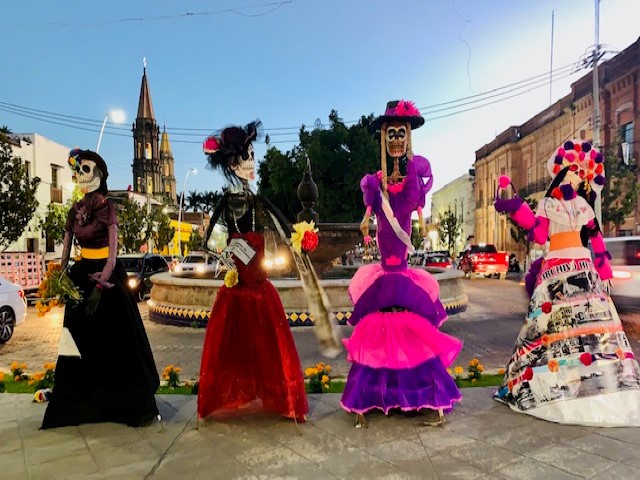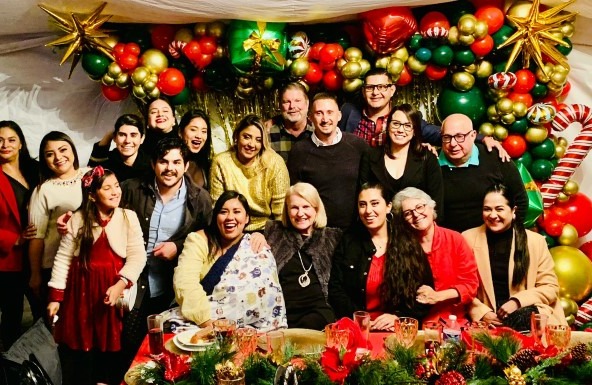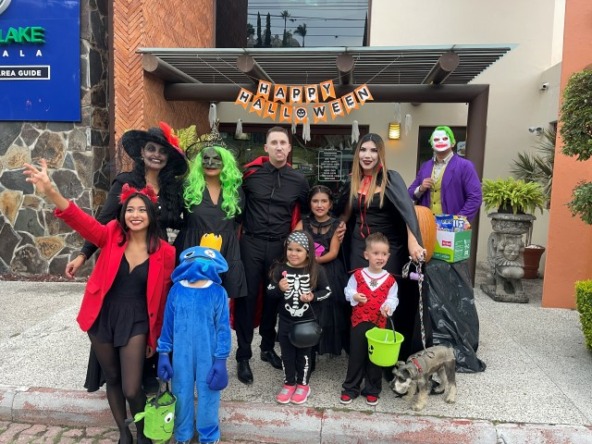Day of the dead otherwise known as “ Dia de los Muertos” a yearly holiday that is celebrated the 02nd of November, a celebration of life and death, one of the most important holidays in the Mexican culture that was passed on from generation to generation going back to the Mesoamerican culture. This tradition is a tribute that honors all the love ones that are no longer among us.
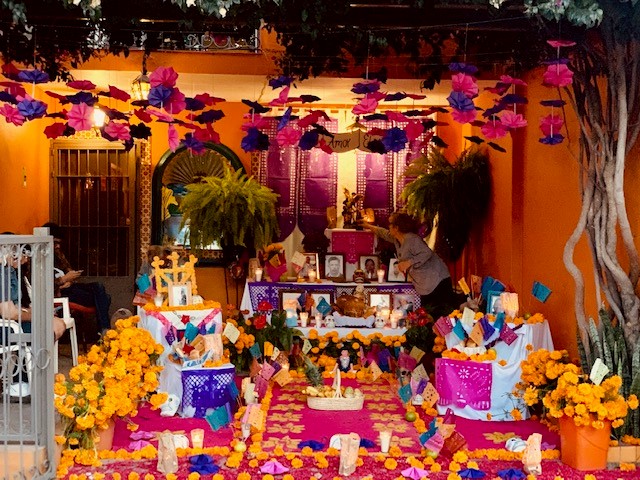
The principal offering is the construction of an “Altar, its custom to decorate it with vibrant, orange, purple, and pink colors, cempazuchitl flowers, candles, personal possessions that belonged to the person that the altar is being tributed too, favorite meal, alcoholic drinks, cigarettes, favorite soccer t-shirts and the famous pan de muertos (Day of the Dead Bread). It is tradition that families built the altars in their homes. These altars are also built-in schools, companies and graveyards to commemorate the day.
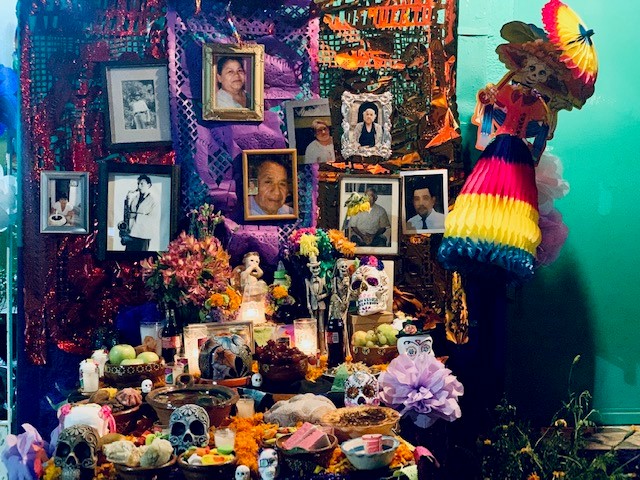
The Altars have many stages that have to be cover while being built, the families have to select the offerings that will be placed in them, this is to encourage the deceased to return home and hear the prayers of their love ones.

Due to the actual situation COVID19 celebrations were canceled in the lakeside under government indications to prevent any infection and welfare of the population. This made everyone very sad because it is a holiday that we all look forward too. Every year during this holiday all the lakeside streets are filled with beautiful colorful altars and offerings.
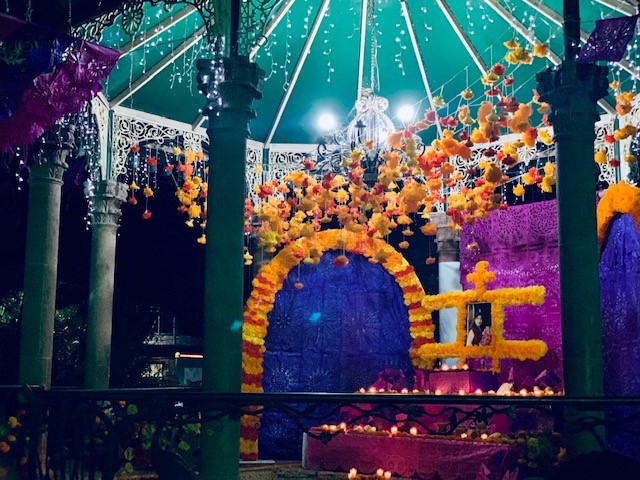
It is custom that the families offer Mexican dishes to all the visitors that view their altars such as, hot chocolate, pan de muertos (Day of the Dead bread), tamales up to mole. Although the celebration was canceled some families continued their festivities to keep alive their traditions in their homes following all safety protocols.
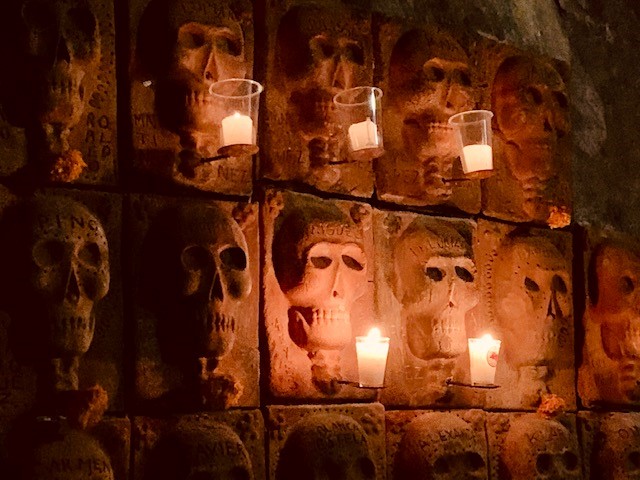
Ajijic is a town filled of culture and traditions and home a great artist such as Efrén González, author of the Wall of the Dead, a spectacular wall filled of clay skulls that have the names of the people that live in Ajijic both Mexican and foreigners, this piece of art is located on the wall of the Marcos Castellanos elementary school in the main heart of the town of Ajijic.
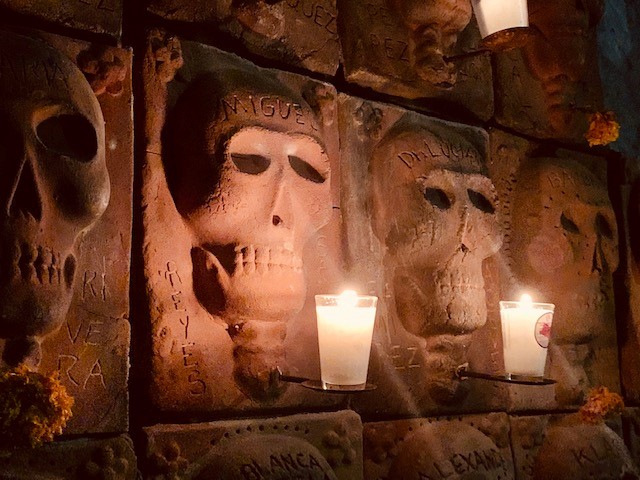
On November 2, Day of the Dead, the mural is filled up with beautiful lights from the candles that the towns people lit up to honor the deceased and the living, this is possible because each carved skull has a small hole with a base for the candle.
Unfortunately, this year because of the protocols established due to COVID19 it was not possible to lit up the entire wall only a few skulls had candles that were lit by some local Ajijic towns people.

This holiday emphasizes past lives, more than being an event that makes people sad its more of a celebration of their life and accomplishments being a focal point that family members offer and create to the diseased in their alters, some even have live music form them during the celebration.
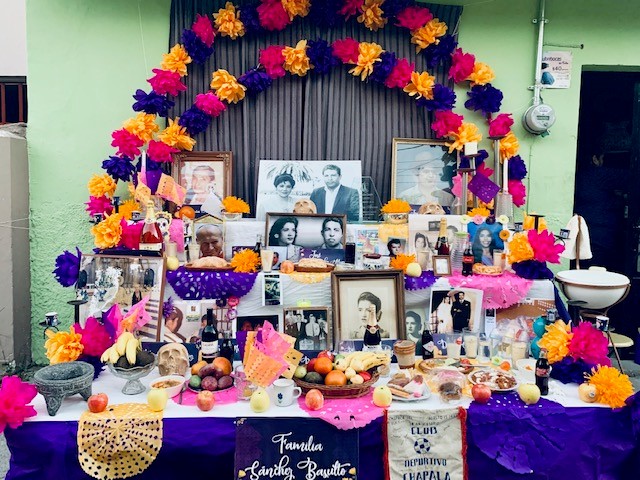
Altares may be also dedicated to many family members as you can view in this alter done by a local family in the streets of Chapala. An art creation that permits the family to express all the love they have for their family members that passed away; the purpose is to celebrate the life they lived. This picture shows a wash bin with a towel, this is for the spirits of the deceased ones so they may refresh themselves upon arrival to the altar.

Dressing up during this celebration as a Cartina, an elegant symbol of the Day of the Dead that states the inevitable of death, a tradition that during this holiday children and adults dress up as Catrina’s, with elaborate makeup, dresses with embroidered flowers on their hair pieces. A statement in the Mexican culture that represents the dead mythology on the cycle of life.


